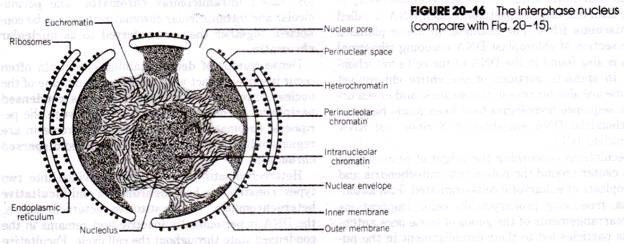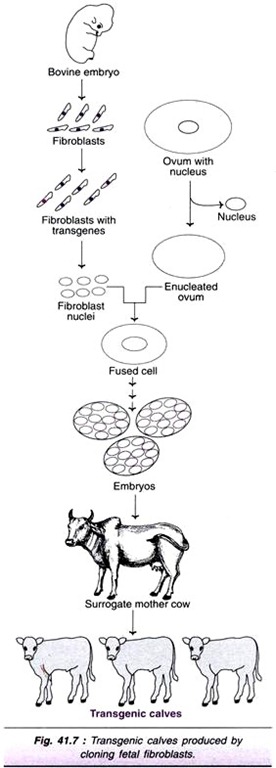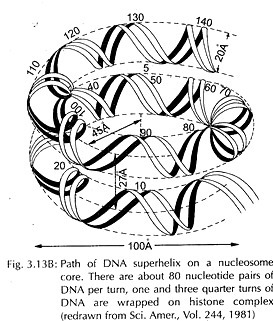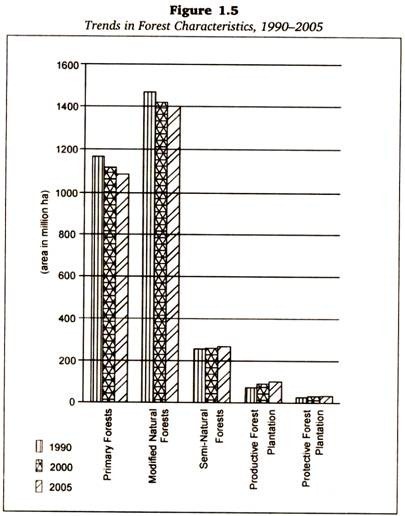ADVERTISEMENTS:
In this article, we are concerned with the organization and activities of viruses, but it should be emphasized at the outset that viruses are not cells and that it is a moot question whether viruses constitute living systems.
Viruses are described here because of their intimate association with cells and because of their contributions to our understanding of certain cellular phenomena.
Structure of Viruses:
ADVERTISEMENTS:
Although all viruses or virions are extremely small, they are diverse in size and in organization. Generally, viruses range in diameter (or length) from about 20 to 200 nm. Thus the largest viruses are actually larger than the smallest cells. However, even the smallest of cells (e.g., bacteria and mycoplasmas) are subject to infection by viruses.
Among those viruses that attack animal cells, the most notorious are the viruses that cause diseases in humans. Smallpox, chicken pox, rabies, poliomyelitis, mumps, measles, influenza, hepatitis, and the “common cold” are all produced by viruses. Even certain leukemia’s and cancers are of viral origin.
Most virions are either rod-shaped or quasi- spherical and contain a nucleic acid core surrounded by a specific geometric array of protein molecules that form a coat or capsid (Fig. 1-44). The proteins of the capsid are arranged to form either a helical pattern (when the virus is rod-like) or an isometric pattern (when the virus is globular). In the latter state, the virus appears much like a polyhedron.
The viruses causing chicken pox, mononucleosis, fever blisters, and colds are examples of virions having polyhedral capsids. Helical capsids are more common among viruses that infect plant cells and bacteria. The tobacco mosaic virus (TMV), which infects the leaves of the tobacco plant, is among the most extensively studied viruses and exhibits the helical capsid pattern.
In many animal viruses and in some plant viruses, a lipoprotein envelope surrounds the capsid (e.g., influenza virus, herpes virus, and smallpox virus). Among the largest and most complex virions are those that attack bacteria (i.e., the bacteriophages). Most extensively studied among these are the T2, T4, and T6 (i.e., the “T-even”) bacteriophages (Fig. 1-44).
These bacteriophages have a tail-like structure emerging from the capsid (Fig. 1-45). The tail is enclosed in a sheath of proteins arranged in a helical pattern, and the head of the virus is polyhedral. The end of the tail frequently reveals specialized structures (Fig. 1-45) involved in attachment to the surface of the host cell (see below).
Proliferative Cycle of a Virus:
In the free or isolated state, viruses exhibit no metabolism and are incapable of proliferation. Proliferation of viruses requires a host cell and in its simplest and most direct form takes the following pattern. One or more viruses attach to specific sites on the surface of the host cell (Fig. 1-46).
Following attachment or adsorption, the viral nucleic acid is inserted through the plasma membrane into the host’s cytoplasm. Release of theT4 bacteriophage of the core nucleic acid from a virus can be achieved experimentally; Figure 1-47 dramatically reveals the uncoiled DNA molecule released by a T4 bacteriophage. Once inside the host cell, the viral nucleic acid redirects the metabolism of the host so that new viral proteins and new viral nucleic acids are formed.
These viral components combine in the host to form large numbers of new virions that egress from the cell by disruption of its plasma membranes (i.e., cell lysis). Some viruses exit the host by budding off, enclosed in a small piece of the host cell’s plasma membrane; this does not lyse the host cell. The cycle of infection then repeats itself.
The proliferative cycle of a virus is best understood for the bacteriophages and is depicted diagrammatically in Figure 1-48. The electron photomicrographs of Figure 1-49 show stages of the process.
On some occasions and only for certain viruses, the injected nucleic acid does not cause proliferation and release of new virions. Instead, the injected nucleic acid is incorporated into the host’s genetic material, and the host cell continues to function in its normal manner. However, duplication of the host’s genetic material prior to cell division is accompanied by duplication of the incorporated viral nucleic acid. Several generations of cells may be produced, each containing a copy of the viral nucleic acid.
Viruses exhibiting this phenomenon are called temperate viruses, because they do not cause the death of the immediate host. Viruses that engage only in the cycle described earlier and that kill the host cell are called virulent viruses. The dormant viral nucleic acid within the host is referred to as a provirus, and the infected cell is said to be lysogenic, because sooner or later, in one of the generations of host cells, the provirus nucleic acid will begin to direct the replication of new virions, and this in turn will lead to cell lysis and release of new infective virus particles.
ADVERTISEMENTS:
Classification of Viruses and the Nature of Viral Nucleic Acids:
The classification of viruses poses certain problems, and several different approaches have been used. One method is to classify the virus according to the type of host cell. Hence, there are animal viruses, plant viruses, and bacterial viruses (i.e., bacteriophages). This method is not always satisfactory; for example, a few viruses infect both animals and plants. Another method employs comparisons of virus morphology (e.g., capsid shape and geometric symmetry). An interesting approach is to classify viruses according to the nature of their genetic material.
Even the beginning student of biology becomes quickly aware of the functional relationships among DNA, RNA, and proteins in cells. Genetic information stored in molecules of DNA is transcribed or copied into a corresponding RNA molecule (called a messenger), and the messenger then directs the synthesis of a specific protein. The protein then acts as an enzyme or structural component of the cell.
In some viruses, however, the genetic information comprising the virion core is RNA and not DNA. Among the RNA viruses are TMV and the virions causing polio, mumps, measles, influenza, and colds. While RNAs of cells are single-stranded molecules, viral RNAs can be single stranded (e.g., TMV RNA) or double stranded (e.g., the reoviruses).
ADVERTISEMENTS:
Like eukaryotic and prokaryotic cells, the genetic information of many viruses is encoded in a DNA core. The DNA viruses include the T-even bacteriophages and those that cause chicken pox, herpes blisters, infectious mononucleosis, and shingles. However, the DNA may be double-stranded linear molecules (e.g., T5 and T7 baceriophages), double- stranded circular molecules (polyoma and SV 40 viruses), single-stranded linear molecules (the parvoviruses), or single-stranded circular molecules (ф X 174 bacteriophage).
Whatever forms the nucleic acid takes, it includes the genetic information for the synthesis of the variety of proteins that either become components of new viruses or are involved in the redirection of the host cell’s metabolism.
It was noted at the beginning of this discussion that although viruses themselves are not cells, the study of viruses has yielded a wealth of information about cells. Research with certain viruses has provided crucial and at times astounding information about the chemistry of and interactions among nucleic acids and proteins and these viruses should be specifically noted.
TMV Studies involving the tobacco mosaic virus began nearly a century ago and represent the starting point in the field of virology. In the 1950s, TMV was at the focal point of research that verified that nucleic acids and not proteins constitute the genetic apparatus and that genetic information can be encoded in RNA as well as in DNA.
ADVERTISEMENTS:
ф X 174 Studies with фX174 bacteriophage, which infects E. coli, revealed that the information for viral proliferation can be encoded in a single strand of DNA and does not require a double strand (i.e., double helix). Moreover, the structure of фX174 DNA has now been completely analyzed, that is, the entire base sequence is known.
A most astounding finding yielded by these studies is that the coding sequences for several of the virus proteins are included within sequences for other proteins. Thus certain genes overlap. Similar findings are being reported for other viruses, including Simian virus 40 (SV 40) that possess double-stranded DNA and have both temperate and virulent phases.
Retroviruses:
A number of RNA- and DNA-containing viruses produce tumors in animals. Among these are the retroviruses which have RNA as their core nucleic acid (e.g., Rous sarcoma virus, avian leukemia virus, and the virus causing A.I.D.S. [HTLV-3]. Unlike other RNA viruses, proliferation within the host cells requires that the inserted RNA be used for the preliminary synthesis of DNA, following which transcription and translation take the conventional pattern. The retroviruses have demonstrated that transcription can take place in the reverse direction, that is, from RNA to DNA.






